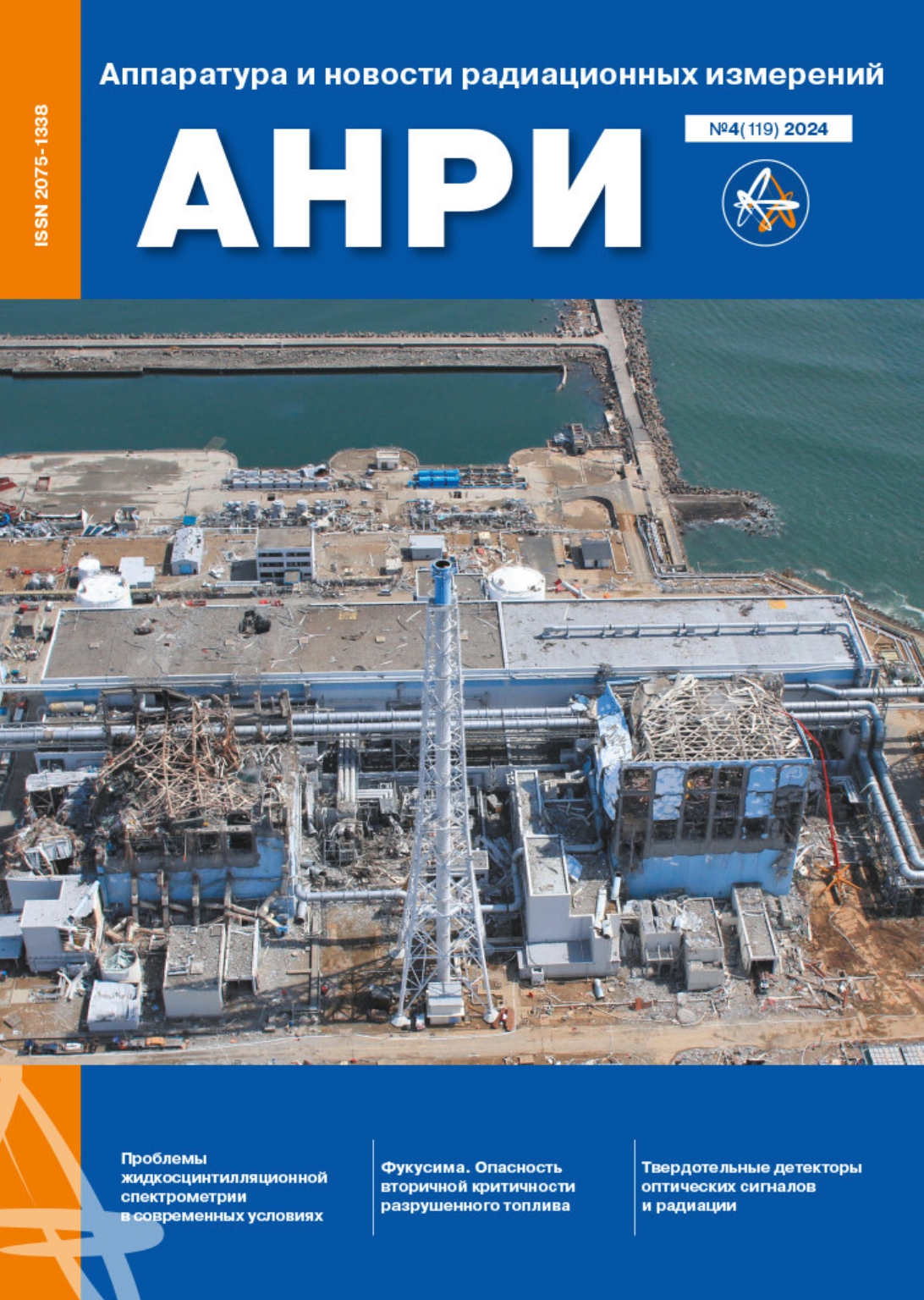Russian Federation
Russian Federation
Russian Federation
During the accident at three units of the Fukushima-1 Nuclear Power Plant (NPP) the melt of the core materials (corium) destroyed the lower part of the reactor vessels, and some of the corium spilled onto the structures in the containment. As a result, accumulations of FuelContaining Materials (FCM) were formed. In the event of re-criticality both the corium remaining in the reactor vessels and FCM may pose a hazard. Thus when extracting them from damaged NPP units, such hazards must be dully accounted for. The paper focuses on nuclear safety measures both taken and planned in the elimination of the Fukushima-1 NPP accident consequences
Fukushima-1 Nuclear Power Plant (NPP), Fuel-Containing Materials (FCM), Recriticality, Fuel Extraction
1. Borovoy A.A., Velihov E.P. Opyt Chernobylya, chast' 1. M.: NIC «Kurchatovskiy institut», 2012. 168 s.
2. K. Nishihara, H. Iwamoto, K., Suyama Estimation of fuel compositions in Fukushima-Daiichi nuclear power plant, JAEA-DATA/CODE–2012-018. Tokai, Ibaraki (Japan): Japan Atomic Energy Agency.
3. F. Tanabe, «Analysis of Core Melt Accident in Fukushima Daiichi-Unit 1», Journal of Nuclear Science and Technology, vol. 8, pp. 1135-1139, 2011.
4. M.L. Susie Hardie, G. Ian McKinley et. al., «Management options for Fukushima corium», Rrogress in Nuclear Energy, no. 92, pp. 260-266, 2012.
5. M.F. López, Numerical Evaluation of Criticality in Debris Beds formed during Severe Accidents in Light Water Reactors, Stuttgart University (Germany), 2021, 176 p. ISSN 0173-6892. URL: http:// dx.doi.org/10.18419/opus-11646 (data obrascheniya: 28.10.2024).
6. K. Nakajima. Issues on Criticality Safety Control of Fuel Debris -Preparation for the Decommissioning of Reactors at the Fukushima Daiichi Nuclear Power Plant. URL: https://www.aesj.net › document›› Vol2_22_191-198_web (data obrascheniya: 28.10.2024).
7. H. Okuno, K. Suyama, Tonoike et. al. «Second version of data collection part of nuclear criticality safety handbook (Contract Research). Technical report», Japan Atomic Energy Agency. URL: https:// jopss.jaea.go.jp/search/servlet/search?5018398&language=1 (data obrascheniya: 28.10.2024).
8. Asmolov V.F., Abalin S.S., Beshta S.V. i dr. Rasplav. Uderzhanie rasplavlennyh materialov aktivnoy zony vodoohlazhdaemyh reaktorov. REA. Moskva, 2018. 562 s.
9. A.M. Badawi, M. Aboualo, Shaat at al. An investigation of corium in Fukushima Daiichi Unit‑1 accident Applied Radiation and Isotopes, no. 186, pp. 110-264, 2022. URL: https://www.researchgate. net/publication/360647388 (data obrascheniya: 28.10.2024).
10. NEA OECD. Benchmark Study of the Accident at the Fukushima Daiichi Nuclear Power Plant Summary Report. NEA/CSNI/R 18. – NEA OECD, 2015, 53 p.
11. Ryzhov S.N., Bogdanova E.V., Ryzhov A.A. i dr. Analiz metodov i tehnologiy ocenki sostava koriuma, obrazovavshegosya v rezul'tate avarii na AES «Fukusima Dayiti»//Global'naya yadernaya bezopasnost'. 2022. No. 3(44). S. 5-21.
12. K. Fueda, R. Takami, K. Minomo at al., «Volatilization of B4C control rods in Fukushima Daiichi nuclear reactors during meltdown: B–Li isotopic signatures in cesium-rich microparticles», Journal of Hazardous Materials, vol. 428, April 2022, pp. 128-214.
13. New submersion method added as option to aid Fukushima. URL: https://english.kyodonews.net/ news/2022/09/f07c0d719b85-new-submersion-method-added-as-option-to-aid-fukushima-debriscleanup. html (data obrascheniya: 28.10.2024).








